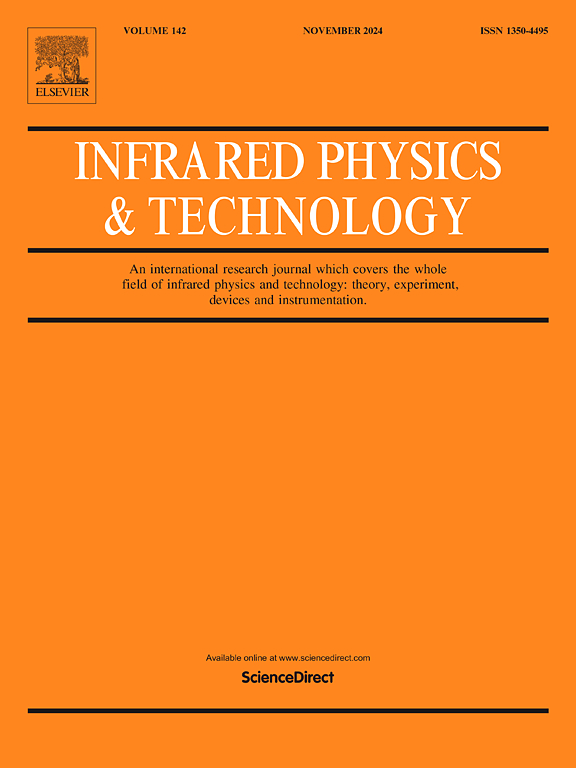An infrared DoLP calculation model with parameters instantiation for high-temp rough surfaces
IF 3.1
3区 物理与天体物理
Q2 INSTRUMENTS & INSTRUMENTATION
引用次数: 0
Abstract
Infrared polarimetric imaging has gained more attention in recent years in various defense applications. As the temperature of an object rises, the infrared polarization on its surface becomes stronger in room-temp environments. This polarization mainly depends on the thermal emission and is slightly affected by the reflection of ambient radiation. Due to the difficulty in solving the relevant sample parameters in the infrared band, the complexity of infrared polarization modeling for high-temp surfaces exceeds that of visible and near-infrared. Based on the polarized bidirectional reflectance distribution function (pBRDF) and Kirchhoff’s law, this work first derives the emissivity vector. Then, a hybrid infrared degree of linear polarization (DoLP) calculation model framework for high-temp rough surfaces is proposed. This framework consists of thermal emission and the reflection of ambient radiation. The reflection model component is simplified by uniformizing the ambient incidence radiation on surfaces. An infrared DoLP measurement experiment is conducted on three sample surfaces at multiple high-tempe points. Considering the insufficiency of measurement data at a single high-temp point, model parameters are inverted using data from two high-temp points. The genetic algorithm is selected as the inversion method, and an instantiated hybrid model is obtained based on the optimal solution of parameters. At multiple high-temp points, the DoLP curve predicted by the hybrid model is consistent with the measured curve. When the observation angle is less than , the absolute residual between the predicted and measured DoLP is less than 0.005. The experimental results demonstrate that the proposed hybrid infrared DoLP calculation model can be applied to predict and simulate the polarization characteristics of high-temp objects in room-temp environments. Moreover, the proposed inversion approach can accurately estimate the material surface parameters.
求助全文
约1分钟内获得全文
求助全文
来源期刊
CiteScore
5.70
自引率
12.10%
发文量
400
审稿时长
67 days
期刊介绍:
The Journal covers the entire field of infrared physics and technology: theory, experiment, application, devices and instrumentation. Infrared'' is defined as covering the near, mid and far infrared (terahertz) regions from 0.75um (750nm) to 1mm (300GHz.) Submissions in the 300GHz to 100GHz region may be accepted at the editors discretion if their content is relevant to shorter wavelengths. Submissions must be primarily concerned with and directly relevant to this spectral region.
Its core topics can be summarized as the generation, propagation and detection, of infrared radiation; the associated optics, materials and devices; and its use in all fields of science, industry, engineering and medicine.
Infrared techniques occur in many different fields, notably spectroscopy and interferometry; material characterization and processing; atmospheric physics, astronomy and space research. Scientific aspects include lasers, quantum optics, quantum electronics, image processing and semiconductor physics. Some important applications are medical diagnostics and treatment, industrial inspection and environmental monitoring.

 求助内容:
求助内容: 应助结果提醒方式:
应助结果提醒方式:


